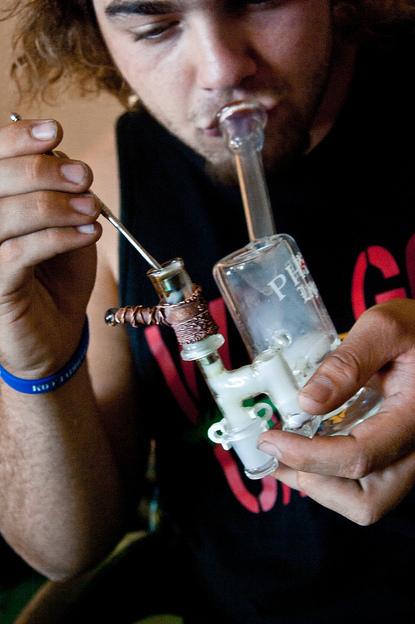House of Wax: The Rising Marijuana Phenomenon
November 14, 2013
One of the most prevalent and persistent controversies the United States has seen over the years is the decriminalization and legalization of marijuana.
However, legalities aside, a new angle of the issue has recently arisen. Infighting within pro-cannabis rights groups has erupted over a newer method of smoking cannabis called dabbing. Dabbing is performed by taking a glass-like marijuana concentrate called butane hash oil, also known as wax or shatter, and dabbing it onto a heated titanium surface, where it vaporizes and is inhaled.
“Smoking just two dabs is like smoking two full blunts,” said Josh Gere, a 19-year-old photography major.
Butane hash oil is so concentrated, it can exceed 80 percent THC content. To put that into perspective, the average THC potency of marijuana is 13 percent, with more potent strains reaching about 25 percent.
A large problem that has come with dabbing is that the strength of BHO and the methods used to smoke it are creating the divide.
Because of the much higher potency and the appearance of dabbing apparatuses, some are calling it the crack of pot.
Kimberly Carglie, a medical cannabis patient’s rights advocate and managing board member of Sacramento medical cannabis dispensary, A Therapeutic Alternative, disagreed. She cited her belief in its medical application as the reason for her support.
“When you use concentrated cannabis, you can use a lot less,” Carglie said. “You can use a tiny little amount … and there are certain patients with high, high pain levels that need a higher level of cannabinoids, so it’s good for them.”
Gere also supported its ability to help with medical problems. “I blew my knee out, it was completely separated about four inches,” Gere said. “For about a month, I was dabbing a lot because it took the pain right away.”
However, Dale Gieringer, PhD, state coordinator of California National Organization for the Reform of Marijuana Laws, is far more wary of the danger such high THC potency poses.
“In the past couple of years, there have been repeated occasions in which 911 teams have had to be called in due to cannabis overdoses,” Gieringer said in a letter to O’Shaughnessy’s, a website that compiles an ongoing history of the medical marijuana movement. “At the NORML conference in LA, there were at least three different emergency calls due to use of high-potency cannabis extracts.”
Connor Murphy, a 22-year-old kinesiology major at Sacramento City College, described his experience in the few times he has tried dabbing.
“I noticed the harsh butane taste,” Murphy said. “I’ve experienced nodding off effects after as little as two or three dabs.” The butane taste presents what may be the largest concern in how BHO is extracted.
Two methods are used to obtain the oil, labeled the closed and open methods.
The closed method, which is used professionally, uses a machine called a butane oil extractor, which is also used to produce aromatics from herbs like lavender. The open method is much less reliable, much more dangerous and much more common.
This involves packing a tube or pipe with marijuana and blasting it with butane, with the resulting oil usually trickling out into a pan. This is the method most small-time recreational users and dealers attempt.
According to a February 2013 InfoGram from the Federal Emergency Management Agency, a number of explosions have been traced back to failed attempts at using the open method to obtain BHO. Windows and walls have been blown out and those trying to extract the oil have suffered burn injuries, and the explosions have been a strong enough to sometimes be misidentified as pipe bombs, according to FEMA’s report.
Still, both the growth in popularity and debates over the safety of dabbing continue in what President of the Society of Cannabis Clinicians Jeffrey Herngrather, MD calls “The Year of the Concentrate.”







Lonelle Pennington • Jun 27, 2017 at 5:53 pm
Hi yes i have a question the guy in the picture with the dab rig what is that rig called and where can i find it thanks